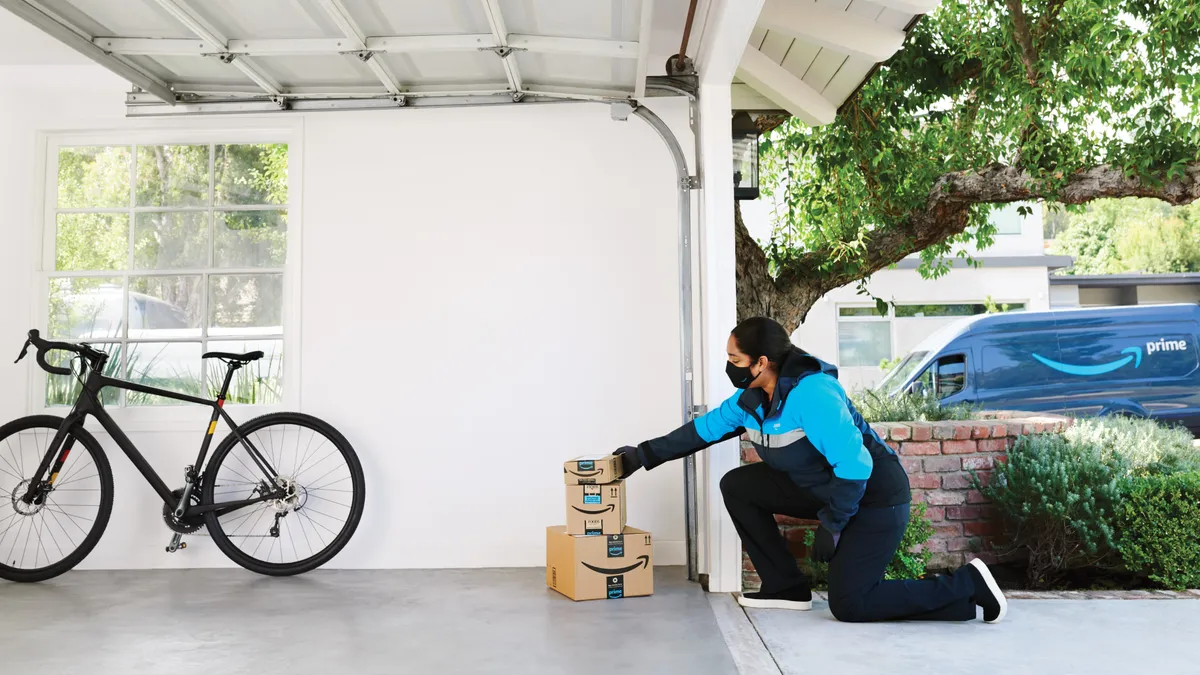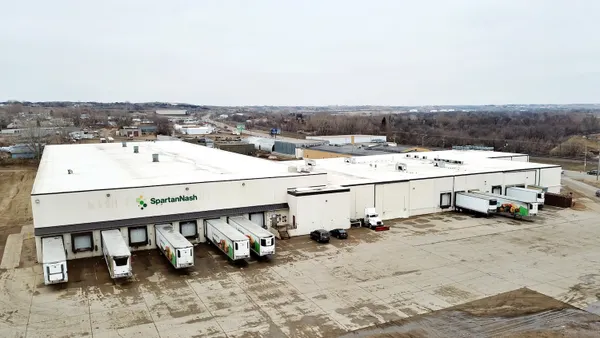Dive Brief:
- Amazon has kicked off Key In-Garage Grocery Delivery services from Whole Foods Market and Amazon Fresh in five cities across the country, a press release from the company announced Thursday.
- The pilot, which has initially rolled out in select areas of Chicago, Dallas, Seattle, Los Angeles and San Francisco, allows eligible Prime members to request that grocery orders are stored securely in their garage using the Key by Amazon app. In-garage delivery requires that customers have a myQ smart garage door opener or myQ hub installed, from which they can monitor the status of their garage door.
- Amazon has plans to later expand the grocery delivery service to other metropolitan areas as it continues to ramp up its in-garage package delivery service, now available in more than 4,000 towns and cities across the country.
Dive Insight:
It’s likely too soon to guess at the results of Amazon's in-garage grocery delivery from the success of the company's package delivery service. A significant incentive for the former is that consumers who suffer from package thieves can buy peace of mind while away from home for long stretches of time. Amazon’s Key In-Garage Grocery Delivery may offer a slightly greater sense of privacy protection, and the minimal time spent by delivery workers in shoppers’ homes means a lower risk of COVID-19 transmission, but it means shoppers will need to be mindful of promptly unpacking any perishables.
Secure package delivery through Key by Amazon was first introduced in 2019 as yet another strategy by the e-commerce behemoth to grow its Prime membership. By attracting Prime shoppers, the logic is that consumers will get used to its perks — free delivery, discounts on groceries and more — and go to Amazon as their default marketplace. This includes drawing in new shoppers to Whole Foods as Amazon attempts to displace the upscale grocery chain’s "Whole Paycheck" reputation.
In the second quarter of 2020, Amazon’s Prime subscription income grew nearly 29% as demand for online shopping skyrocketed. Prime also confers the advantage of an expansive trove of consumer data, which Amazon is undoubtedly drawing from as it seeks to reinvent its grocery ecosystem.
Walmart introduced an in-home delivery service in late 2019 in three U.S. cities. The offering requires shoppers to buy a smart door or garage lock and sign up to a membership program for an introductory price of $19.95 per month to take advantage of the program. Amazon Prime, on the other hand, comes out to under $10 per month for an annual membership and offers additional perks like Whole Foods discounts and annual Prime Day deals.
Walmart’s and Amazon’s in-home grocery delivery services offer contrasting models. While Amazon orders are deposited just inside customers’ garages, Walmart employees enter shoppers’ homes and stock their fridges, which can be monitored remotely through the employee’s wearable camera.













